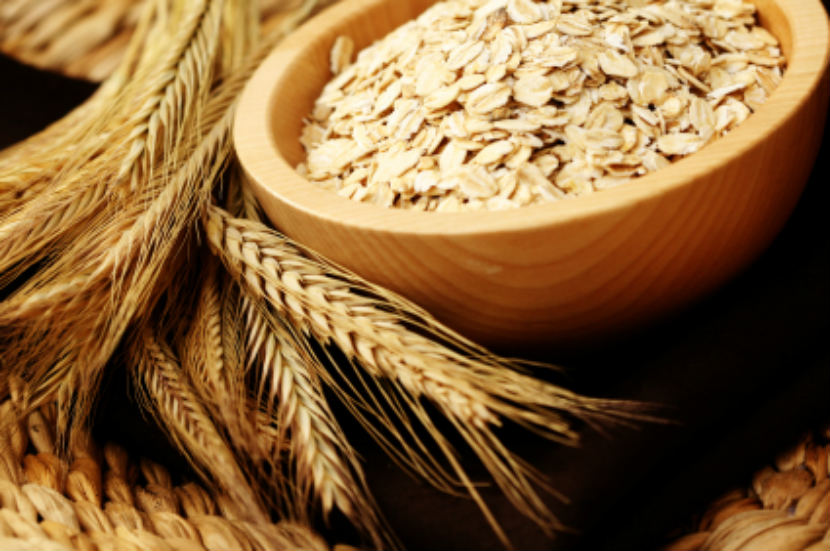
Celiac disease requires a gluten-free diet for life. But you can still enjoy a wide variety of delicious and nutritious foods! Fill your plate with vegetables and fruits, protein foods and gluten-free whole grain foods.
Read on to discover the wonderful tastes that you can safely enjoy.
About celiac disease
Celiac disease is a condition where your small intestine is damaged by eating foods that contain gluten. Gluten is a type of protein that is found in many grains like wheat, barley, rye and any foods that contain these grains.
When your small intestine is damaged, your body may have difficulty absorbing nutrients such as protein, fat and vitamins. Over time, not being able to absorb these nutrients can lead to anemia, osteoporosis, nerve damage and other health problems. This is an important reason why a person with celiac disease needs to follow a gluten-free diet.
Celiac disease is different than a wheat allergy
The symptoms for the two conditions may be similar as both may cause cramps, diarrhea and bloating. But an allergy to wheat means your immune system reacts to the proteins in wheat (and not necessarily gluten). However, unlike with celiac disease, a wheat allergy does not damage the intestine – but it can cause other uncomfortable and harmful reactions.
If you have these symptoms when you eat wheat, it is important to work with your doctor to get a proper diagnosis.
What foods do I need to avoid on a gluten-free diet?
Celiac disease is treated by following a gluten-free diet for life. For a person with celiac disease, gluten-free living can only result in improved health and well-being!
If you have celiac disease, you cannot eat grains that contain gluten, such as:
-
Barley
-
Rye
-
Triticale
-
Wheat (including couscous, bulgur, spelt and kamut)
Foods that contain these grains, such as pasta, cereal, bread, pizza, crackers, cookies and cake, must also be avoided.
What foods can I safely eat?
There are many safe foods! Popular grains that are a delicious part of the gluten-free diet include:
-
Buckwheat
-
Corn
-
Flax
-
All bean-based flours (soy, chickpea, lentil, fava, etc.)
-
Millet
-
Potato
-
Pure oats
-
Quinoa
-
Rice
-
Sorghum
These grains can be made into pasta, bread and a variety of baked goods, which are available at many grocery stores or ordered online. If you like to cook, you can also make your own gluten-free versions of your favourite foods. For a longer list of grains and flours that are allowed on a gluten-free diet, click here.
Beyond grains, you can also safely enjoy:
-
All fresh vegetables and fruit
-
Milk, cheese and yogurt
-
Fresh meat, poultry and fish (avoid any that have been breaded or marinated)
-
Legumes such as chickpeas, lentils and kidney beans, dried peas
-
Eggs
-
Soy beverages, tofu
-
Nuts and seeds
-
Oil, butter and margarine
Reminder!
While the foods on the list above are naturally gluten free, they may contain gluten once they are used to make other food items. For example, wheat is often used to make baked beans or deli meats. Click here for a longer list of the foods that may contain added gluten.
Can people with celiac disease eat oats?
It is safe for most adults with celiac disease to have up to 3/4 cup (175 mL) a day of pure oats (measured dry). However, it is important to only use pure, uncontaminated oats. Since most oats sold in North America are processed near or with grains that contain gluten, the oats too may contain some gluten.
Helpful nutrition label tips:
-
Stricter Canadian guidelines require that gluten-containing products are clearly labelled. The ingredient list will say “contains: wheat/gluten” if it contains this ingredient.
-
Read food labels every time you shop. Ingredients can change without notice, even on foods that you have bought before.
-
If you are unsure about an ingredient, call the company and ask questions.
-
Watch out for hidden sources of gluten found in:
- Beer
- Chocolate bars (especially ones with wafers)
- Flavoured coffee and tea
- Deli meat, sausages, hot dogs
- Sauces (like soy or teriyaki), gravy, marinades
- Some medications (check with your pharmacist)
Bottom line
The joys of eating delicious food are not lost for people with celiac disease. With some advanced planning, educated shopping and a taste for adventure, you can still enjoy cooking and dining while following your gluten-free diet.
For more information
The Canadian Celiac Association
Celiac Sprue Association
Gluten-Free Diet
You may also be interested in:
All About Legumes
All About Oats
All About Whole Grains
Last Update – November 27, 2020